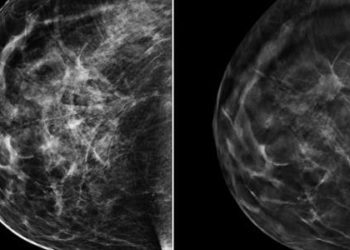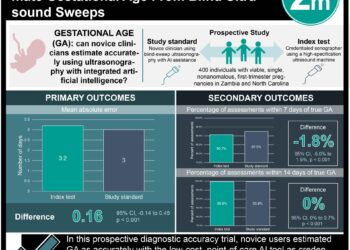Appendicitis ruled out by clinical scoring in cases of equivocal ultrasound findings
1. In patients with suspected appendicitis and equivocal ultrasound results, a low clinical score such as the Alvarado or Pediatric Appendicitis score was helpful in identifying patients with a low likelihood of disease.
2. Only slightly more than one-tenth of ultrasound examinations for appendicitis produced equivocal results, which could be adequately identified with clinical scoring systems or, with greater accuracy, computed tomography of the abdomen.
Evidence Rating: 3 (Average)
Study Rundown: Ultrasound (US) is often first-line imaging modality in the pediatric patient population. However, US findings can be equivocal in a subset of these patients, typically requiring subsequent evaluation with abdominal CT. However, clinical data may allow stratification of patients with equivocal findings, potentially decreasing the reliance on CT and its associated radiation exposure. This study evaluated a population of pediatric patients presenting to the ED with suspected appendicitis who underwent US evaluation, employing a clinical scoring system such as the Alvarado or Pediatric Appendicitis Score (PAS) to further evaluate cases with equivocal US findings. Roughly one-tenth of ultrasounds produced equivocal results in nearly 800 encounters, and for most equivocal results, a clinical scoring system was applied. Of the remaining unequivocal studies, structured reporting of the appendiceal studies redemonstrated its excellent diagnostic performance. However, PAS and Alvarado scores remained ambiguous in nearly half of the cases of equivocal US findings, offering a limited positive predictive value. This study suggests that structured clinical data, when used in conjunction with imaging data, can help increase the negative predictive value of US in the exclusion of appendicitis, and may provide a low-cost, simply-applied tool to aid in decreasing the use of CT within the pediatric population. However, generalizability of these data may be limited given that the results hinged on the evaluation of appendicitis by pediatric fellowship-trained radiologists using structured reporting systems, which may not represent practice nationally. Future studies validating these results prospectively are warranted, with particular attention to the training and skill level of radiologists without specific pediatric ultrasound training.
Click to read the study in Journal of Radiology
Relevant reading: Prospective validation of the pediatric appendicitis score
In-Depth [retrospective cohort]: A total of 776 patients (mean age 11.7 years +/- 3.7) presenting to the ED with suspected appendicitis were included in the study. All patients under 18 years of age with the appropriate presenting symptoms were included at a single academic medical center between November 2011 and June 2013. Exclusion criteria included patients with a >24 hr time difference between the date of US and available clinical data or if patients underwent surgery >2 weeks from the US date. Appendicitis was diagnosed in 203 cases (26%), with a negative predictive value of US of 96.2% and a positive predictive value of 93.3% for appendicitis, with a total of 89/782 equivocal cases (11.4%). Categorical low and high likelihood PAS and Alvarado scores predicted the presence of appendicitis in 61.1% (22/36) and 77.3% (34/44) of equivocal US examinations. CT was performed in 37% of encounters with equivocal US results, resulting in a definitive diagnosis in 94% of encounters, with an accuracy of 97%.
Image: PD
©2016 2 Minute Medicine, Inc. All rights reserved. No works may be reproduced without expressed written consent from 2 Minute Medicine, Inc. Inquire about licensing here. No article should be construed as medical advice and is not intended as such by the authors or by 2 Minute Medicine, Inc.







